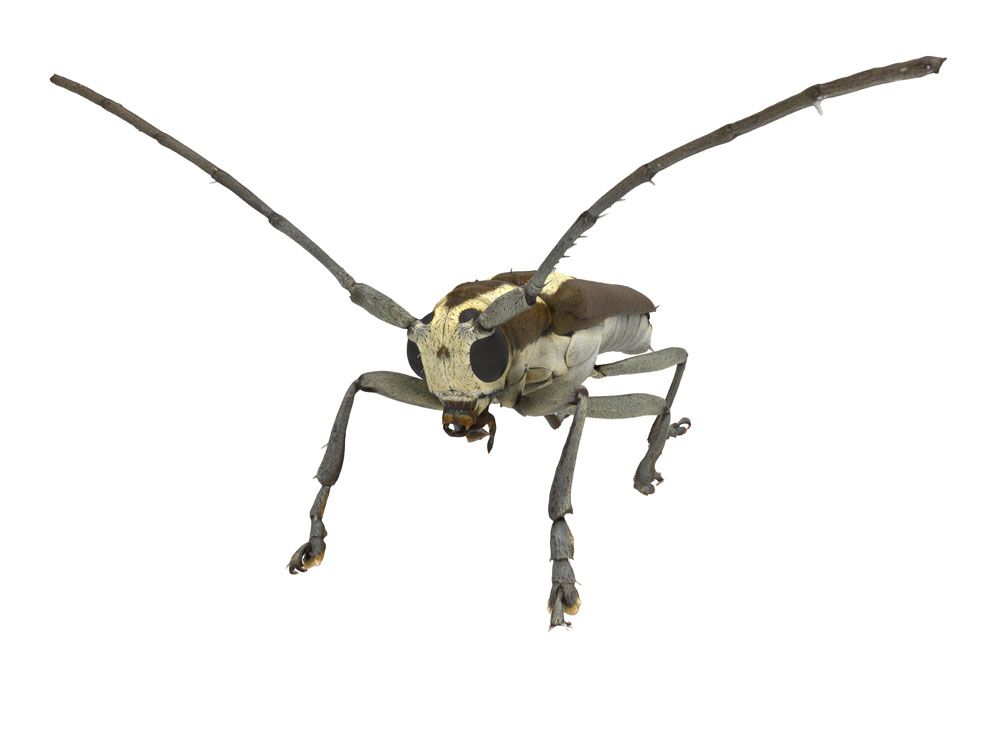
Roundheaded Appletree Borer – Saperda candida
Roundheaded Appletree Borer (Saperda candida)
Latin Name: Saperda candida
Common Name: Roundheaded Appletree Borer
Appearance:
- Adult flatheaded appletree borer emergence holes are D-shaped, whereas adult rounded appletree borer emergence holes are (you got it) round.Both species’ adult females lay eggs in fissures or slits in the bark, usually towards the base of plants.
- Flatheaded appletree borer adults are around 12 mm long, have a metallic sheen, and are brown to grey in hue.
- Larvae are 25 mm long when fully mature, and they form lengthy, twisting, torturous tunnels that can girdle and destroy huge branches and/or young trees.
- Eggs hatch into legless, white & gray larvae 3 to 4 mm long
